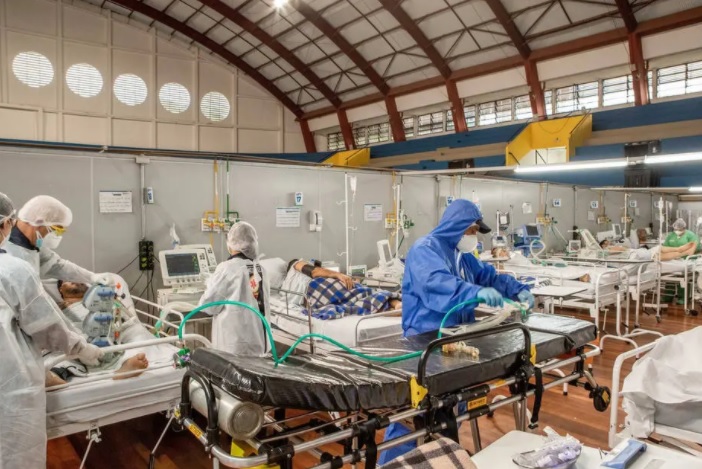RIO DE JANEIRO, BRAZIL – An unprecedented study by the National Association of Private Hospitals (ANAHP) found that March 2021 was the worst month of the pandemic in Brazilian private hospitals. In March, the mortality rate of patients with Covid-19 reached 15.1%, surpassing August 2020’s 14.9%, until then the worst month since the start of the pandemic in Brazil.

The data show the behavior of the pandemic in the year 2020 and in the first quarter of 2021, the changes in the profile of hospitalized patients, and the impact on the sector’s main indicators. They are part of two documents, the 2021 ANAHP Observatory and the Observatory’s 6th Technical Note, to be released on Wednesday, May 26.
Also in March the incidence of Covid-19 in patients seen in the emergency room recorded the highest rate observed since the start of the pandemic in Brazil: 45.3%. Up until then, the record had been set in December, when the rate of patients with suspected Covid-19 seen in the emergency room with a confirmed diagnosis reached 37.8%.
Increase in hospitalization time
As observed in other studies, private hospitals in Brazil have noted a change in the features of the disease earlier this year, compared to the same period last year. Among Covid-19 patients aged 45 to 89 years, there was an increase of over 6 days in the average length of hospital stay in the first quarter of 2021, compared to the same period in 2020.
Among ANAHP members, the highest peaks in bed occupancy exclusively for Covid-19 patients since the start of the pandemic also occurred this year, between March and May.
Before the pandemic, the average length of stay for patients in general in member hospitals had been decreasing between 2017 (4.27) and 2019 (4.04). But this has changed. In 2020, the length of stay increased to 4.59 days and in the first quarter of 2021, this average rose to 5 days.
Bed occupancy rate
Contrary to all expectations, in 2020, while the number of patients infected by the novel coronavirus increased, private hospitals saw their overall bed occupancy rate drop. The rate, which had remained above 75% between 2017 and 2019, stood at 67.59% in 2020.
“The drop was mainly driven by the recommendation to defer elective procedures in the initial months of the pandemic in 2020 and the population’s fear of leaving home, even to continue treatments for chronic diseases and, unfortunately, even for severe conditions,” explains Ary Ribeiro, Observatory Editor and Technical Note Editor of the ANAHP Observatory and CEO of Sabará Children’s Hospital.
There is still no data about this year, but it is believed that the occupancy rate has risen again, since many hospitals have reached their maximum inpatient capacity attending almost exclusively Covid-19 patients.
Another interesting fact from the study is that from January to March this year, only hospitalizations related to respiratory and infectious diseases, where Covid-19 is classified, showed an increase when compared to the same period last year. Hospitalizations for all other causes dropped, particularly for digestive and circulatory system diseases.
“The ANAHP Observatory and the Observatory’s 6th Technical Note consolidate the scenarios we have monitored over the past year and, based on the Covid patient hospitalization peaks, demonstrate the trend for 2021.”
“In the analysis, one may infer that this year will remain very challenging for health systems and hospitals in general, with prospects of ‘waves’ of Covid-19, impacting the occupancy rate and epidemiological profile and, consequently, the expenses and revenue of private hospitals.”
“The evolution of the pandemic in Brazil in 2021 has the pace of vaccination coverage as the main variable, which may impact the reduction in the number of cases and deaths,” concludes Ribeiro.

